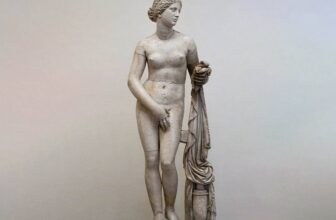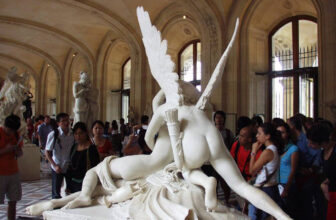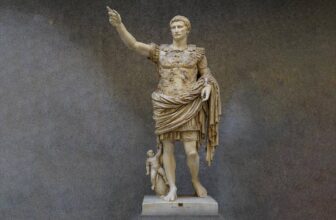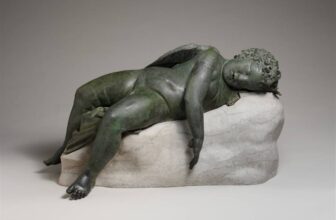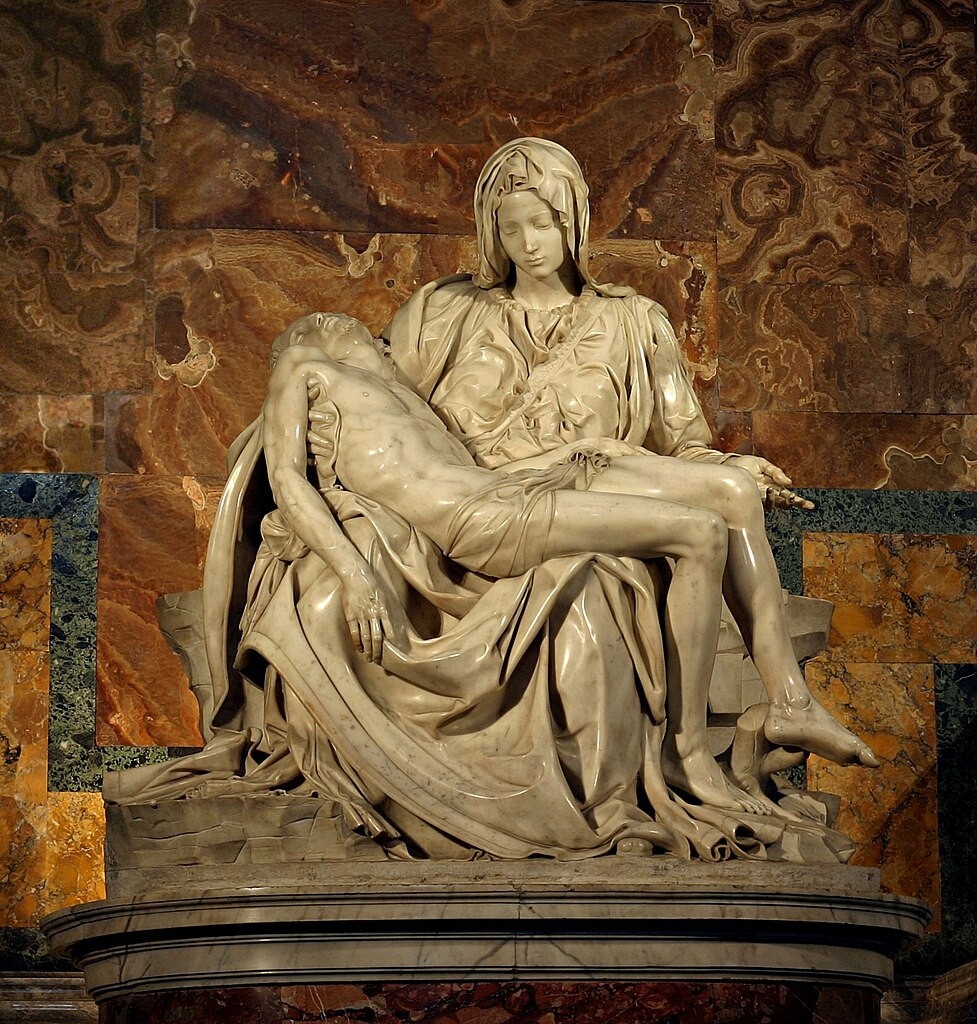
What Is Michelangelo Known For
In the history of art history, few names shine as brightly as Michelangelo Buonarroti. An artist of staggering talent and ambition, Michelangelo left an indelible mark on the world through his paintings, architecture, poetry, and most notably, his sculptures. The sheer emotion, detail, and technical brilliance of his marble creations continue to astound audiences more than 500 years later.
Michelangelo was not merely an artist, he was a visionary who could see divine forms trapped within stone and possessed the genius and strength to release them. His sculptures, often depicting biblical or mythological figures, capture the beauty and complexity of the human form with unmatched realism. In this story post, we delve deep into what made Michelangelo’s art so unique, how he approached sculpture, his most famous works, their immense value today, and where you can view these masterpieces around the world.
Michelangelo di Lodovico Buonarroti Simoni (1475–1564), widely known simply as Michelangelo, is celebrated as one of the greatest artists of all time. Living during the Italian Renaissance, a period rich with innovation and artistic flourishing, Michelangelo stood out even among legendary contemporaries such as Leonardo da Vinci and Raphael.
Though many know him for painting the ceiling of the Sistine Chapel, Michelangelo considered himself first and foremost a sculptor. His passion for carving marble was ignited early in life, and he believed sculpture to be the highest form of art, a direct representation of divine creation.
Michelangelo is known for:
Sculptures like David, Pietà, and Moses that exhibit extraordinary anatomical precision.
His work on the Sistine Chapel ceiling (1508–1512), including The Creation of Adam.
Architectural contributions to St. Peter’s Basilica in Rome.
An intense, perfectionist personality that demanded nothing short of artistic excellence.
Blending idealized beauty with emotional intensity, a hallmark of Renaissance humanism.
But it is his sculptures, hewn from blocks of cold marble into lifelike forms that seem to breathe and think, that most exemplify his genius.
How Did Michelangelo Make His Sculptures?
Creating a Michelangelo sculpture was an extraordinary feat, not just of artistry but of physical labor, engineering, and spiritual devotion.
1. The Vision: Seeing the Form Within
Michelangelo famously said:
“I saw the angel in the marble and carved until I set him free.”
He believed that the sculpture already existed within the block of marble and that his job was simply to remove the excess. This Platonic philosophy emphasized discovering the perfect form hidden in chaos.
2. Choosing the Marble
Michelangelo often selected his marble personally from the Carrara quarries in northern Italy, known for producing some of the finest marble in the world. He valued white, pure marble with few veins, ideal for revealing the subtleties of the human form.
3. Design and Sketching
Before carving, Michelangelo created preliminary sketches and wax or clay models called bozzetti. However, he was unusual among Renaissance artists in that he sometimes skipped the full-scale model and carved directly into the marble, a bold, irreversible approach.
4. Carving Technique
Michelangelo used a system of chisels, rasps, and mallets:
Point chisel for rough shaping.
Tooth chisel for contouring the surface.
Flat chisel for refining.
Rasps and abrasives to polish and finish.
He worked from the front to the back, a technique called non-finito when left incomplete. These rough, unfinished areas in some sculptures reveal the raw power of his method and the process behind the form.
5. Emotion and Anatomy
Michelangelo studied cadavers in his youth to understand muscle and bone structure. His sculptures exhibit incredible anatomical accuracy, not just in surface detail, but in the underlying tension and emotional intensity of the figures.
What Is Michelangelo’s Most Famous Art Sculpture?
Though many of Michelangelo’s works are masterpieces, a few stand out as universally iconic.
1. David (1501–1504)
Location: Galleria dell’Accademia, Florence
Height: 17 feet (5.17 meters)
Material: Carrara marble
Perhaps the most famous sculpture in the world, David depicts the biblical hero. Unlike earlier depictions, Michelangelo shows David not in triumph, but in tense contemplation, a slingshot over his shoulder and a stone in hand.
The statue is a symbol of youth, strength, and civic freedom, and its realism is staggering: from the veins in the hands to the intense gaze, every detail contributes to a sense of life and narrative.
2. Pietà (1498–1499)
Location: St. Peter’s Basilica, Vatican City
Material: Carrara marble
Michelangelo carved this stunning representation of the Virgin Mary cradling the body of Christ when he was just 24 years old. It is a serene and sorrowful work, remarkable for its delicate detailing and emotional power.
The Pietà is also the only work Michelangelo ever signed, carving his name across Mary’s sash after overhearing someone attribute it to another sculptor.
3. Moses (1513–1515)
Location: San Pietro in Vincoli, Rome
Material: Marble
Created for the tomb of Pope Julius II, Moses is a towering figure with intense musculature and a penetrating gaze. The statue famously includes horns on Moses’ head, a result of a mistranslation of the Hebrew word “keren” (which can mean both “horn” and “ray of light”).
The Moses sculpture is often praised for its tension, he appears as though he might stand at any moment.
4. The Dying Slave and The Rebellious Slave (1513–1516)
Location: Louvre Museum, Paris
Material: Marble
These figures, intended for the same tomb as Moses, express the struggle of the soul within the body. Their poses and expressions are deeply poignant, speaking to themes of freedom, captivity, and transcendence.
5. The Rondanini Pietà (1552–1564)
Location: Castello Sforzesco, Milan
Material: Marble
This is Michelangelo’s final sculpture, left unfinished at his death. Unlike his earlier Pietà, this version is abstract, fragile, and ethereal. It reflects a deep spirituality and a departure from his earlier emphasis on physical perfection.
How Much Are Michelangelo’s Art Sculptures Worth?
Valuing a Michelangelo sculpture is like trying to price the Mona Lisa, technically possible, but practically and ethically impossible.
Since almost all of Michelangelo’s sculptures are in museums or churches, and are considered priceless cultural heritage, they are not on the market. However, if one were ever sold (hypothetically), experts estimate it could be worth hundreds of millions, possibly over a billion dollars.
To give a sense of scale:
Leonardo da Vinci’s Salvator Mundi sold for $450 million in 2017.
Michelangelo’s works are rarer and arguably more influential in sculpture than Leonardo’s are in painting.
That said, smaller attributed works, sketches, or copies made by Michelangelo or his pupils occasionally appear at auction. These can sell for tens of millions.
Where Are Michelangelo’s Sculptures Located?
Though Michelangelo was Italian through and through, his works are scattered across several countries due to historical commissions, looting, and preservation efforts. Here are some primary locations:
1. Italy
Florence
David – Galleria dell’Accademia
Medici Chapel Sculptures – San Lorenzo
Bruges Madonna (copy) – Museo dell’Opera del Duomo
Rome
Moses – San Pietro in Vincoli
Pietà – St. Peter’s Basilica, Vatican
Tomb of Giuliano de’ Medici – Medici Chapel
Milan
Rondanini Pietà – Castello Sforzesco
Bologna
Statuettes of Saints – Basilica of San Domenico
2. France
Paris
The Dying Slave and The Rebellious Slave – Louvre Museum
3. United Kingdom and United States (limited)
While no major Michelangelo sculptures are housed in the UK or US, drawings and architectural models can be found in institutions like the British Museum and The Metropolitan Museum of Art.
Michelangelo’s Legacy in Sculpture
Michelangelo’s contribution to sculpture is monumental. He took the ancient Greek and Roman ideal of beauty and infused it with Christian spirituality and Renaissance humanism. His influence shaped countless generations of artists and redefined what sculpture could be.
Why His Sculptures Still Matter Today:
Human emotion and anatomy are expressed with unmatched mastery.
Religious and philosophical depth infuses every work.
Technical innovation in carving and composition set new standards.
Even unfinished works like the Prisoners (or Slaves) series in Florence evoke a powerful metaphor for the human soul trapped in the flesh, a timeless concept that continues to resonate.
Michelangelo was more than a sculptor, he was a prophet of the human form, a philosopher in marble, and a titan of creativity. His sculptures continue to astonish because they seem to exist outside of time, caught in the eternal moment between motion and stillness, life and stone.
To stand before David, gaze upon the Pietà, or confront the stormy intensity of Moses is to experience not just great art, but the soul of the Renaissance.
Michelangelo once said:
“Every block of stone has a statue inside it, and it is the task of the sculptor to discover it.”
Through this belief and his unmatched talent, he didn’t just sculpt figures, he sculpted history, and gave shape to the divine in ways that continue to move the human spirit centuries later.
